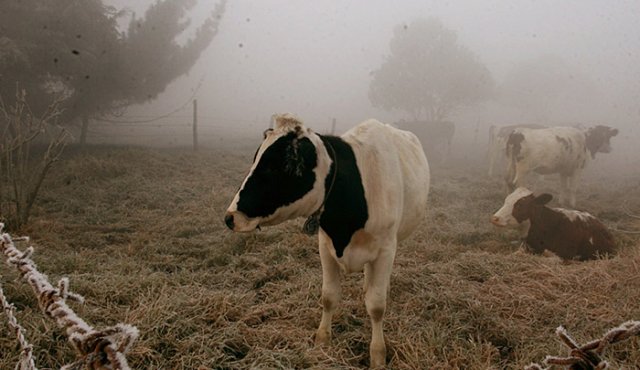The beginning of 2021 has generated changes in the country’s climate, and, as usual, frosts are expected to occur in the areas of the Cundiboyancense, Nariño and Norte de Santander highlands. Regarding this situation and its effects on the agricultural sector, the minister of the Colombian agricultural portfolio, Rodolfo Zea, said that producers in these areas must keep their guard up against frost.
“The recommendation, that they implement prevention and mitigation measures in the face of possible drops to minimum temperatures, as well as the effects of the La Niña phenomenon,” said Zea.
The minister added that frosts are manifested when the air temperature drops and approaches zero degrees, or below zero, affecting pastures and some crops such as potatoes, vegetables, fruit trees, flowers and corn, among others.
Frosts occur every year in areas that are located at an altitude close to or above 2,400 meters. On the other hand, these occur in December, January, February and until mid-March, which are months with high daytime temperatures, little cloudiness, calm winds and low rainfall.
The minister stressed that by 2021 the occurrence will be subject to conditions present in the country due to the La Niña phenomenon and other local meteorological events.
From the National Agroclimatic Technical Table, led by the Ministry of Agriculture in alliance with the Institute of Hydrology, Meteorology and Environmental Studies (Ideam), and with the support of unions from the agricultural sector, the academy, secretariats of Agriculture, among other actors of the National and local order, vigilance is maintained on the diverse climatic variations to provide information and alerts to the agricultural and livestock producers of the country.
According to the Ideam reports, there are already records of minimum temperature drops in some municipalities located in the highlands of Cundiboyacense and Nariño and also in sectors of Santander, and in some other regions.
According to the general director of Ideam, Yolanda González, the La Niña phenomenon is present in the country, and that is why there will be periods of high temperatures during the day and drops in the early morning, which can even cause frost.
Among the prevention actions to face the frosts, between the Ministry and the Ideam, they issued a circular with recommendations for mayors, unions and agricultural producers.
For his part, Minister Zea invited farmers and ranchers to remain attentive to Ideam’s daily reports and alerts on minimum temperature drops in different areas of the country, as well as the La Niña phenomenon.
In addition, he recommended consulting the AgroKit platform and the National Agroclimatic Bulletin, which this month brings recommendations for the management and control of frost.
Read here: Government readjusted cadastral appraisals by 3%
The recommendations
Some of the recommendations made by the Ministry and Ideam for agricultural producers who want to protect their crops from frost.
Check the sowing calendar, so that the flowering or harvest does not coincide with the frosts. That the crops are preferably germinating, which is the most resistant phase of development to this meteorological phenomenon.
Plants can be partially or totally affected. However, the damages also depend on the species to which they belong.
Producers must strengthen measures to face and mitigate the effects of this climatic event according to the characteristics of each crop.
Reduce tillage activities to avoid excessive loss of moisture in the soil. Sow in lots where irrigation or rainwater capture is facilitated. It is suggested to cover the plants with plastic covers.
Have water availability in the field to intensify the irrigation of crops and moisten the soil in the evening hours.
Use living mulches to avoid dehydration of the soil. Conserve weeds or certain weeds in the streets of the crop to reduce the impact of radiation on the soil.
Establish or maintain live barriers, which reduce the direct incidence of cold winds.
In addition, maintain adequate fertilization of the crops because the unhealthy ones are more susceptible to frost.
Ecological agriculture must also be promoted, in harmony with silvopastoral systems that cast shade and prevent the luminosity of the sun’s rays from drying out the soil.
Finally, what is recommended for livestock is to have food sources other than the direct ingestion of pastures and maintain pasture rotations.
–


